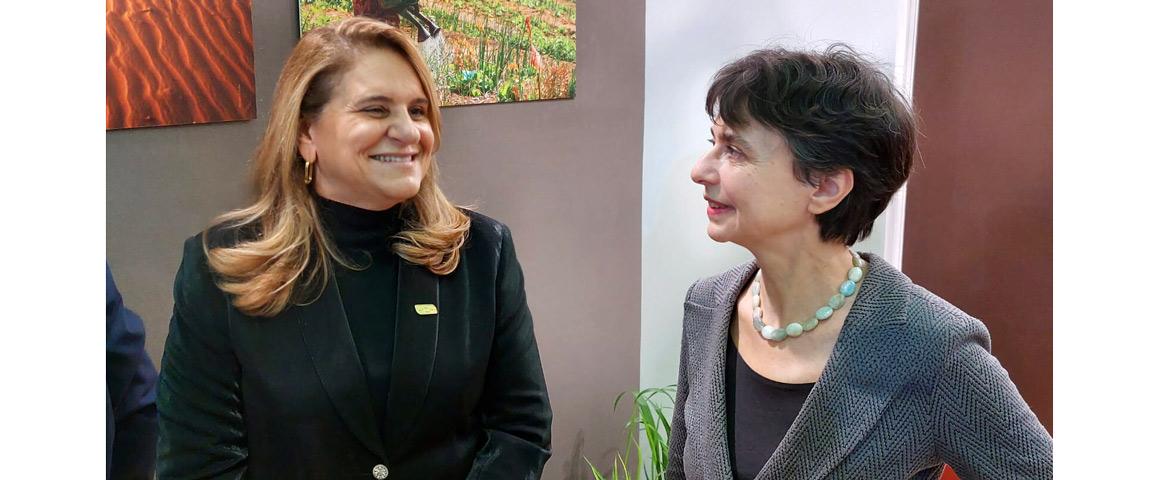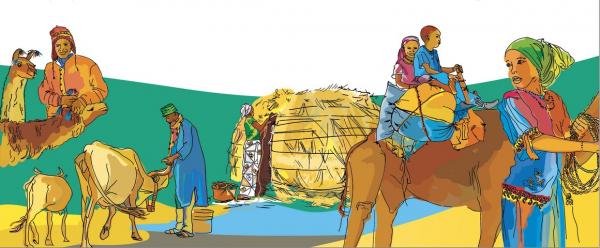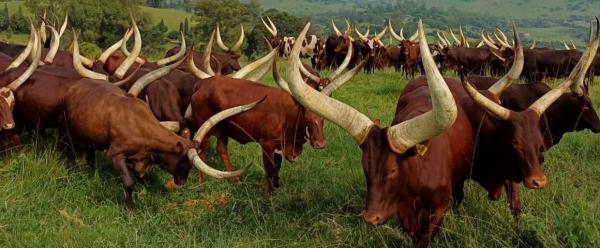Institutional news 2 January 2026
- Home
- CIRAD news
- News
- 40 years of partnership between CIRAD and EMBRAPA Elisabeth Claverie Silvia Massruha
CIRAD and EMBRAPA: 40 years of partnership to address climate and food issues in the Amazon forests of Brazil and French Guiana

EMBRAPA President Silvia Massruhá and CIRAD CEO Élisabeth Claverie de Saint Martin at the Paris International Agricultural Show in February 2024 © CIRAD
This year marks CIRAD's 40th anniversary and four decades of partnership with EMBRAPA. Can you explain how you see this partnership as an example of successful scientific cooperation between France and Brazil?
Élisabeth Claverie de Saint Martin: Our partnership is remarkable in many respects. Since the founding of the Brazilian Agricultural Research Corporation, France, and particularly its research organizations such as CIRAD, has helped to provide scientific training for a large number of researchers from EMBRAPA.
In terms of research, the two organizations have worked together on several projects, notably in the field of family farming. The Silvânia project in the Cerrados is a perfect example. Conservation agriculture and agricultural risk modelling are another two aspects of our initial research in partnership. For instance, CIRAD and EMBRAPA were co-leaders of the ZARC project (agricultural zoning of climate risk). Our collaboration currently extends to implementing wide-ranging projects such as TerrAmaz and Sustenta e Innova, to support sustainable, territory-based development of Amazonian agro-ecosystems.
Our partnership has shifted from scientific support of agricultural value chains and training to cooperation under the umbrella of increasingly wide-ranging projects, now funded by international donors. We are working together to address global challenges, notably by rehabilitating degraded areas and rolling out inclusive forest management.
This collaboration is now backed by the Forests, agriculture and territorial development in Amazonia (Amazonie) platform in partnership, a Franco-Brazilian research cooperative that currently includes scientists from and covers territories in Colombia, Ecuador, Peru and French Guiana.
Silvia Massruhá: Our partnership with CIRAD is one of our most solid and fruitful in terms of its history, shared research objectives, development and exchanges concerning agricultural research progress, diversity, food security, conservation/restoration, and family farming, amongst others. Between 2002 and 2022 alone, EMBRAPA worked with France on almost 1000 scientific publications, putting France second among the countries with which it publishes the most, after the US. France alone accounts for some 30% of all EMBRAPA publications with European institutions. Of the more than 1000 publications with French institutions, 543 involved CIRAD, making it our biggest partners after USDA in the US.
Apart from publications, several dozen of our scientists have attended French higher education institutions, for their Masters, PhD or post-doc. These exchanges have almost certainly led not just to the projects quoted above, but also to substantial progress in terms of knowledge, technological innovations and no doubt to public policy.
Our two organizations recently signed a new general cooperation agreement. What shared challenges will they be addressing from now on?
E.C.S.M.: In the light of the projects that are nearing completion, our collaboration could focus more on protecting and rehabilitating soil fertility. Natural resource management could be another priority, particularly characterizing and promoting biodiversity (the bioeconomy). Preserving natural resources such as forests and water in northern Brazil and Nordeste is also a shared concern. Alleviating poverty and food insecurity, particularly in Nordeste, which is also a G20 goal, is another shared challenge, to be tackled through agroecological intensification of family farming systems. Lastly, promotion of local foods and knowledge could also be stepped up.
S.M.: Globalization poses major challenges for research, notably in fields like sustainable production, productive inclusion, carbon footprint reduction, digital farming, genetic improvement, restoration of degrade zones, adaptation to climate change, food security, and hunger and poverty alleviation. Our teams will no doubt be exploring these fields in the coming years. Our partnership has already made significant contributions to public policy and to the way scientific diplomacy is conducted and progresses, and is a good example for new collaborations. Joint projects will almost certainly allow us to make progress on the conservation and sustainable use of the Amazon rainforest in both Brazil and French Guiana.
The agricultural sector has historically been male-dominated. However, you are both women, heading two major national research organizations in that field, in Brazil and France. This is proof that there have been significant changes. How do you feel this is reflected in practical terms, both within your organizations and as regards scientific research?
E.C.S.M.: Yes, this is a clear sign of greater openness and of the recognition of women's presence within the scientific professions, and agricultural science in particular. It is also only fair that women's place and role be recognized both within management and in high-level decision making.
This change is clear right from the university level, notably at agricultural colleges in France and Brazil, such as Luiz de Queiroz College of Agriculture (ESALQ) at the University of São Paulo, with which CIRAD has worked for a long time. In its training operations, CIRAD is seeing ever greater numbers of women amongst the student researchers from every horizon it receives in Montpellier and overseas.
This institutional change also serves to make research collectives look more closely the role of women in improving food systems and healthy food supplies, particularly school meals.
S.M.: In Brazil, women are increasingly involved in cooperatives, associations, executive and legislative bodies, scientific, technological and innovation institutions, and public and private firms. Women in rural areas are an ever-growing entrepreneurial force. These initiatives, which allow us to discuss our experiences and learn from each other, are boosting women's role in all these sectors.
We also need to create an environment that allows women scientists and managers to access prominent positions, such as our current posts, which are a lever for this type of development. In working to be more inclusive and developing the necessary tools, the research system will also become more creative and competitive and produce better results.
However, we need to go one step further, by actively encouraging rural women to set up businesses. To this end, EMBRAPA launched a strategic initiative in 2022, the Brazil Rural Women's Observatory. This structure is part of EMBRAPA's strategic intelligence structure, and aims to subsidize public policy in favour of women working in agriculture, silviculture and aquaculture.
The observatory is a watch tool that serves to monitor and foresee relevant issues in this field, depending on different regions and topics.
According to data it has released, the number of rural businesses headed by women grew by 44 % between 2006 and 2017 (the years studied by the observatory to date). There are now almost a million such businesses.
The observatory and the various inclusivity initiatives are instruments that fit in with the Agenda 2030 Sustainable Development Goals, particularly SDG5, as regards the following target: "Enhance the use of enabling technology, in particular information and communications technology, to promote the empowerment of women".
How can CIRAD and EMBRAPA combine their expertise to work towards preserving and reforesting zones in which indigenous people live?
E.C.S.M.: CIRAD works in the three main global forest basins, at grassroots level, alongside local people. Every community should be able to benefit from a precise assessment of its situation and requirements, to be able to build bespoke solutions. In Brazil, CIRAD and EMBRAPA are already working together under the umbrella of the Amazonie platform in partnership, and several other projects aimed at preserving and restoring degraded areas, notably by means of reforestation.
The TerrAmaz project is a perfect example of this collaboration between CIRAD and EMBRAPA, which also involves many other partners such as the NGO IDEFLOR, UFRA, EUPA and the Para state government. It offers indigenous communities such as the Tembé people agricultural approaches that guarantee their food security or allow them to monitor their territory using new technology such as drones.
It is vital that we work with indigenous communities, since they play a crucial role as forest guardians as they live right in the heart of those forests and are thus best placed to ensure their sustainable long-term use and preservation.
S.M.: Throughout its history, EMBRAPA has worked on research and development operations aimed at strengthening the culture of indigenous peoples and promoting territory-based governance and ongoing dialogue. Those peoples' knowledge and practices are essential, and have been built up since time immemorial thanks to their close interactions with the environment, adapting to a wide range of situations. That relationship is a unique opportunity for EMBRAPA and CIRAD to work towards sustainable resource use and food security and sovereignty.
EMBRAPA has signed a technical cooperation agreement with the Fundação Nacional do Índio (FUNAI), covering research, development and technology transfer operations to benefit indigenous people, in line with a range of public policies, notably the 2012 national indigenous land territorial and environmental management policy (PNGATI). That policy takes account of indigenous land territorial and environmental management plans covering and promoting research fields such as indigenous farming, family farming, agro-biodiversity, agroecology, traditional know-how and ethnic knowledge
Moreover, projects in partnership with CIRAD, such as TerrAmaz, are working to draft territorial intelligence plans, generate knowledge and learn to co-build solutions with local people, to preserve the forest.
What role could the close partnership between CIRAD and EMBRAPA play as regards the prospect of South-South support of increased agricultural research operations in some less advanced countries, which President Lula has called for?
E.C.S.M.: EMBRAPA is widely recognized as one of the world's leading agricultural research organizations, and has made a huge contribution to agricultural development in Brazil. Its scientific expertise in terms of tropical agronomy could be put to good use to develop tropical farming systems in less advanced countries.
Collaboration between CIRAD and EMBRAPA could make use of the 20 platforms in partnership initiated by CIRAD and of which it is one of the founding partners, by pooling their expertise and knowledge.
EMBRAPA is already involved in the PP-AL and Amazonie platforms. Pooling resources and knowledge to promote development in the countries of the global South and build capacity could benefit regions Africa and South America.
S.M.: The partnership between EMBRAPA and CIRAD is boosting the role of agricultural science and innovation within South-South cooperation partnerships. Each organization has a partnership network that serves to strengthen their relationship and generate joint operations that extend beyond each institution on its own.
For instance, EMBRAPA will be hosting the One CGIAR Council meeting in June this year, and I am also President and Coordinator of the Procisur programme, two operations in which EMBRAPA's presence and CIRAD's institutional capacity could make a real difference.
EMBRAPA is constantly being asked to resume its participation in South-South cooperation activities, and with its current management and the support of the Brazilian Cooperation Agency (ABC), APEX, the Ministry and the Federal Government, and international strategic partners such as CIRAD, we will be able to rebuild a strong strategy in that respect.



























